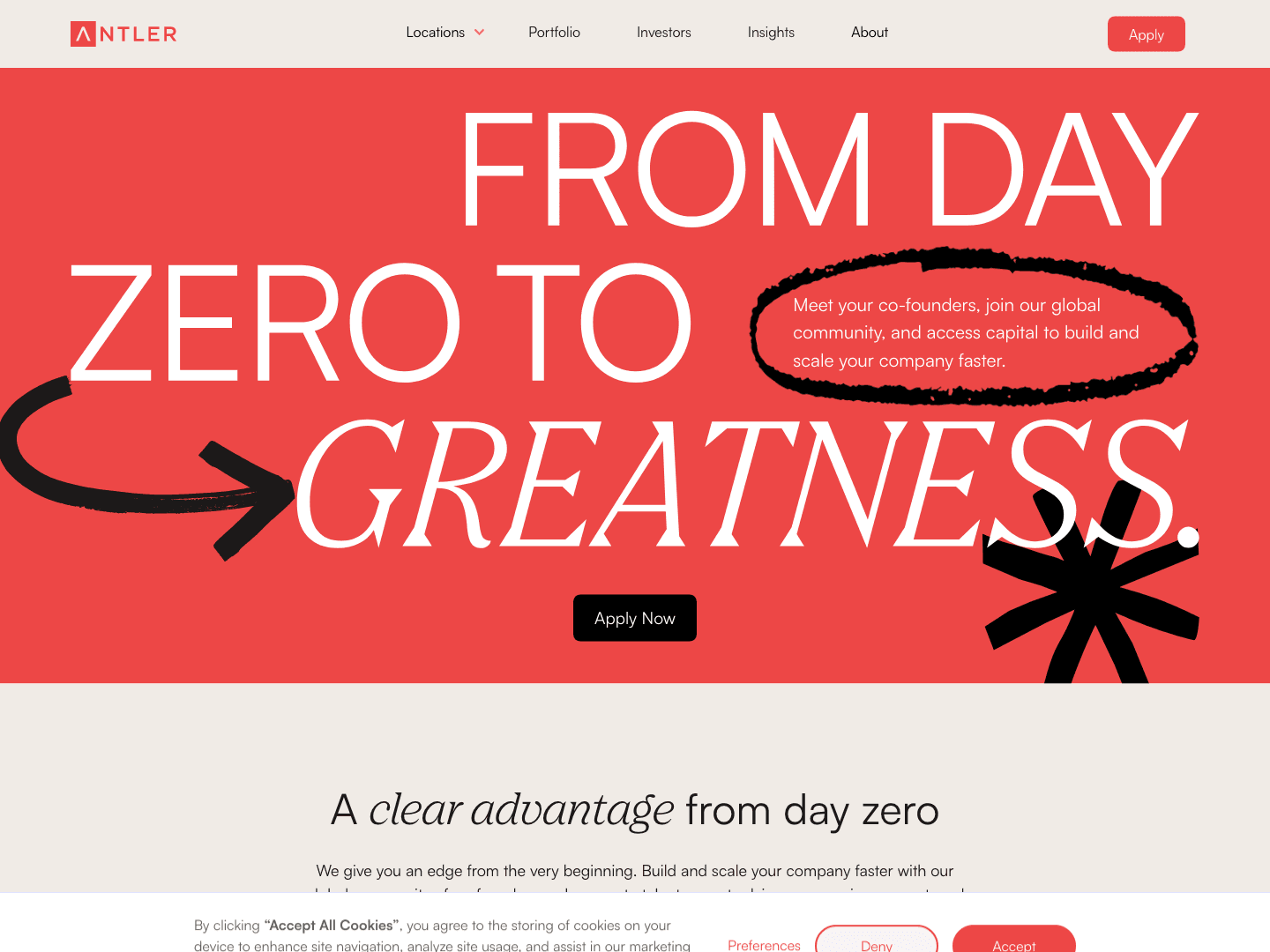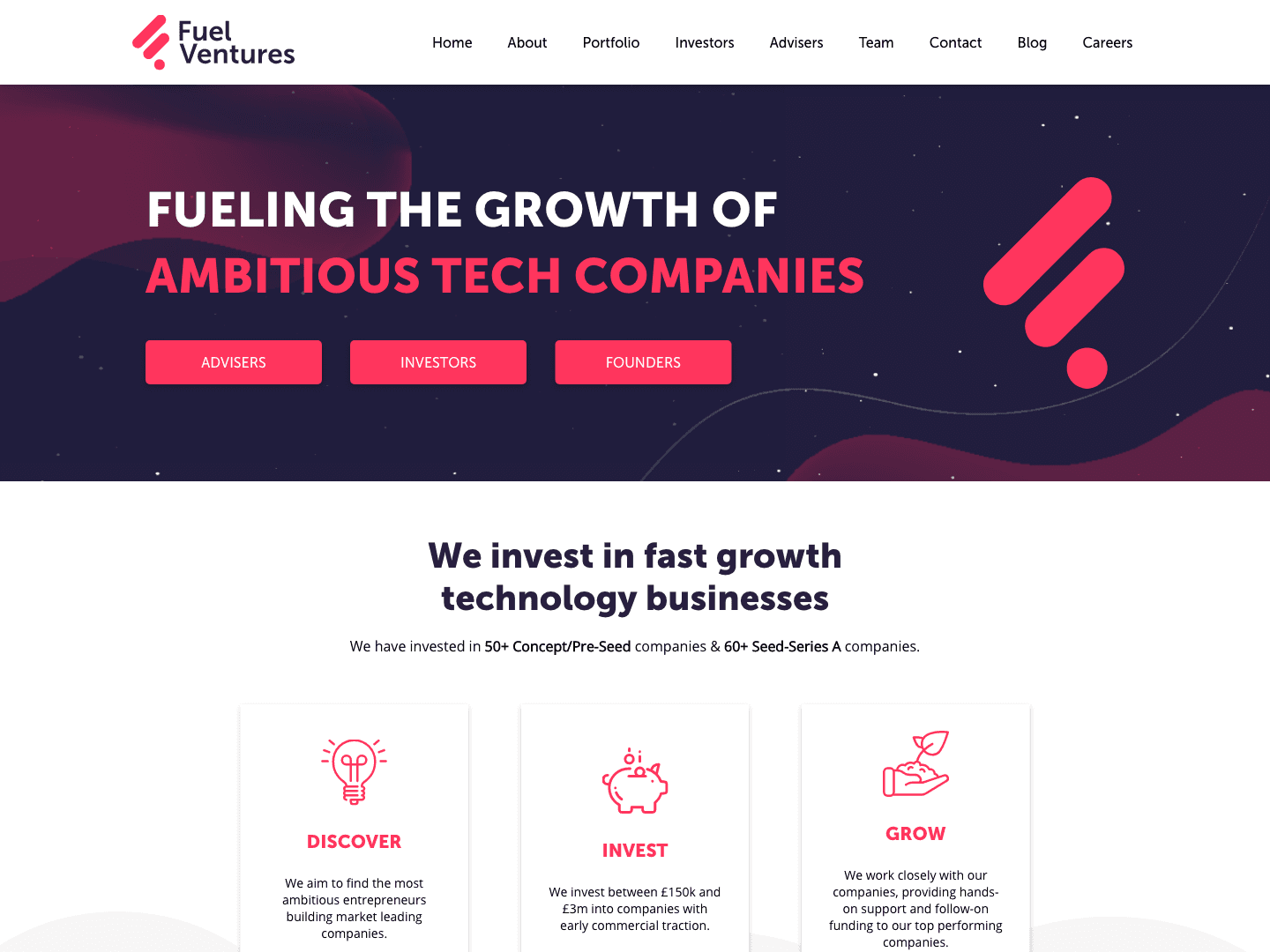Top 57 SEIS Funds In The UK (Free List)
List of SEIS funds with contact details + full guide

SEIS funds can be good for both investors and startups.
For investors, they offer significant tax benefits, including income tax relief, capital gains tax exemption, loss relief, and inheritance tax relief. For startups, they encourage early-stage investment, providing essential capital for growth and innovation.
This ressource starts with a list of active SEIS funds and continues with an in-depth guide to help you navigate the UK SEIS fund ecosystem.
👉 Looking for more early-stage funding options? Explore our full UK venture capital firm list, or browse VC firms by sector to find specialist investors backing startups like yours — from pre-seed to Series A.
57 most active SEIS funds in the UK
Investors (location, website, linkedin, twitter)
| Id | SEIS Funds | City, Country | Funding Round | Investment Sector | Contact Details |
|---|---|---|---|---|---|
| 1 |  3 Sisters Ventures(1 contacts 🔒) | London, UK | Femtech, Healthtech | ||
| 2 |  Air Street Capital(2 contacts 🔒) | London, UK | |||
| 3 | London, UK | ||||
| 4 | Edinburgh, UK | ||||
| 5 | London, UK | ||||
| 6 | Gloucester, UK | ||||
| 7 |  Btomorrow Ventures(5 contacts 🔒) | London, UK | Generalist | ||
| 8 |  Cardiff Capital Region(3 contacts 🔒) | Cardiff, UK | Generalist, Greentech | ||
| 9 | London, UK | ||||
| 10 | London, UK | ||||
| 11 | London, UK | Generalist, AI | |||
| 12 | Belfast, UK | ||||
| 13 | London, UK | ||||
| 14 | London, UK | ||||
| 15 | London, UK | ||||
| 16 | London, UK | ||||
| 17 | London, UK | ||||
| 18 | London, UK | ||||
| 19 |  Eterna Blockchain Fund(4 contacts 🔒) | London, UK | Blockchain | ||
| 20 | London, UK | ||||
| 21 | London, UK | ||||
| 22 |  FirstMonday VC(1 contacts 🔒) | London, UK | Generalist | ||
| 23 | London, UK | ||||
| 24 | London, UK | ||||
| 25 |  GameTech Ventures(1 contacts 🔒) | London, UK | |||
| 26 | London, UK | ||||
| 27 |  Moguntia Capital(1 contacts 🔒) | London, UK | Supply chain | ||
| 28 | London, UK | ||||
| 29 | London, UK | ||||
| 30 | London, UK | ||||
| 31 |  Spark Venture Management(4 contacts 🔒) | London, UK | Tech, B2C | ||
| 32 |  Walking Ventures(2 contacts 🔒) | London, UK | |||
| Full investor database | All Locations | All Funding Rounds | All Sectors | All Contact Details |
Click here for the full list of 801+ VC funds in the UK
What is an SEIS fund?
In the next sections you will get to know everything about SEIS funds:
- What is an SEIS fund?
- SEIS for companies - how can I qualify?
- SEIS for investors - example (with numbers)
- Should I invest in SEIS?
- Who cannot invest in SEIS?
- What is the 3 year rule for SEIS?
- What is the 2 year rule for SEIS?
- Can I invest in my own SEIS?
An SEIS fund refers to an investment scheme in the United Kingdom known as the Seed Enterprise Investment Scheme. This government-backed program, initiated in 2012, is designed to encourage investment in early-stage businesses by offering various tax reliefs to individual investors.
An SEIS fund is essentially a pool of such investments, managed by a fund manager. The fund manager will select eligible startup companies to invest in, following the rules and guidelines laid out by the UK government.
Here are some of the major tax reliefs under the SEIS scheme:
Income Tax Relief
Investors can claim income tax relief of 50% on investments up to £200,000 per tax year.
Capital Gains Tax Exemption
If the shares are held for at least three years, any gain is free from capital gains tax.
Loss Relief
If the company fails, the investor can claim loss relief. This can be a significant advantage because it lowers the actual at-risk capital.
Inheritance Tax Relief
Shares in SEIS eligible companies will typically be outside of an investor's estate for inheritance tax purposes if held for at least two years.
Capital Gains Reinvestment Relief
If an investor has paid capital gains tax in the last three years, they can claim to defer this when they reinvest the gain into an SEIS company.
As with any investment, investing in an SEIS fund carries risks, and the specific benefits can vary depending on the investor's individual tax circumstances. Therefore, it's advisable to seek professional financial advice before investing.
SEIS for startups - how can I qualify?
For a company to apply for the Seed Enterprise Investment Scheme (SEIS) in the UK, it needs to meet specific criteria and follow certain steps. Here is an overview:

1 - Check Eligibility
The company must be a startup or an early-stage company. It must have fewer than 25 employees, assets of less than £350,000, and it must not have been trading for more than two years.
2 - Raise Funding
The company can raise up to £250,000 under the SEIS scheme.
3 - Submit Compliance Statement
The company submits a compliance statement to HM Revenue & Customs (HMRC) using form SEIS1. This can only be done after the company has been trading for at least four months or has spent at least 70% of the SEIS funds.
4 - Receive Authorization
If everything checks out, HMRC will provide an authorization that the company can distribute to its investors. The company will then receive SEIS2 and SEIS3 forms from HMRC.
5 - Distribute Tax Relief Certificates to Investors
Using the SEIS3 forms, the company provides tax relief certificates to its investors. The investors can then claim tax relief on their SEIS-eligible investments.
This process can be complex, and the eligibility rules and application steps can change. It's recommended to seek professional advice to ensure compliance with all the relevant regulations and to maximise the benefits of the scheme.
SEIS for investors - example (with numbers)
Let's break down the Seed Enterprise Investment Scheme (SEIS) with a numerical example.

Please note that this is a simplified example, and actual results may vary depending on various factors including the individual's tax situation (check with your tax lawyer first).
Step 1 - Assume you're an investor who puts £10,000 into an SEIS-eligible company. The SEIS program allows you to claim 50% income tax relief on this investment, which is £5,000. So if your income tax bill for the year was £20,000, with your income tax relief, it would now be reduced to £15,000.
Step 2 - Let's say the company does well and the value of your shares doubles to £20,000 over three years. If you then sell your shares, the £10,000 gain would typically be subject to Capital Gains Tax. However, under SEIS, this gain is exempted from the tax as long as you've held the shares for at least three years.
Step 3 - If the company does not do well and your investment becomes worthless, you can claim loss relief. Assume that your marginal tax rate is 45%. The loss on the investment, after considering the initial income tax relief, is £5,000 (since you received £5,000 back in income tax relief, your actual loss is £5,000). You can claim loss relief on this £5,000 at your marginal tax rate, reducing your income tax bill by a further £2,250 (£5,000 * 45%).
Step 4 - Let's assume you had previously sold an asset and made a capital gain of £10,000, on which you paid capital gains tax. If you reinvest this gain into an SEIS eligible investment, you can claim to defer the capital gains tax that you paid. This effectively reduces the cost of your investment.
Should I invest in SEIS?
Whether you should invest in a Seed Enterprise Investment Scheme (SEIS) depends on your individual circumstances, financial goals, risk tolerance, and the specific opportunities available to you. Here are some factors to consider:

Potential Advantages of SEIS Investments:
SEIS Tax Relief
SEIS provides significant tax reliefs. These include income tax relief, capital gains tax exemption, loss relief, and inheritance tax relief, which can help to offset some of the risk associated with investing in early-stage businesses.
High Growth Potential
Early-stage companies might offer higher potential returns than more mature companies if they succeed, given their capacity for rapid growth.
Potential Disadvantages of SEIS Investments:
High Risk
SEIS-eligible companies are typically startups or very early-stage businesses, which are often riskier than more established companies. There is a significant risk that the company could fail, resulting in a total loss of your investment.
Lack of Liquidity
SEIS shares are typically not traded on a public exchange, meaning they can be difficult to sell. You may need to hold onto your investment for an extended period, potentially without receiving any dividends.
Complexity
The rules around SEIS investments can be complex, particularly when it comes to claiming tax reliefs. Mistakes can result in unexpected tax liabilities.
Given the above, SEIS investments can be a good fit for investors who are comfortable with high-risk investments, understand the specific opportunities and risks of the businesses they are investing in, and have a tax liability against which they can offset the tax reliefs.
Who cannot invest in SEIS?
Certain individuals are restricted from investing in the Seed Enterprise Investment Scheme (SEIS) due to specific rules set out by the UK government. These are intended to ensure that the tax reliefs are not exploited, and that they genuinely encourage investment in early-stage companies. Here are some categories of individuals who cannot invest:

Connected Persons
Individuals are considered connected to the company and are not eligible for SEIS relief if they are a partner, director (this does not include non-executive directors), or employee of the company in which they're investing, or a partner, director, or employee of a partner of that company.
Substantial Interest
Individuals who own more than 30% of the shares, voting rights, rights to assets in a winding up, or control over the company are considered to have a substantial interest and are not eligible for SEIS relief.
Associates
The restrictions on connected persons and substantial interest also apply to associates of the investor. Associates include business partners, trustees of any settlement in which the investor or their spouse or civil partner is a settler, and relatives (spouse or civil partner, parents or grandparents, children or grandchildren; but not siblings).
Frequently Asked Questions About SEIS Funds

What is the 3 year rule for SEIS?
The "3-year rule" for the Seed Enterprise Investment Scheme (SEIS) is generally related to company eligibility.
For the company:
To be eligible for SEIS, a company must not have been trading for more than 3 years at the time of the investment. This rule is designed to ensure that the SEIS benefits are targeting very early-stage, or 'seed', companies.
What is the 2 year rule for SEIS?
For the investor:
This is a type of tax relief that is available after holding SEIS shares for a minimum of three years. After this period, the shares generally become exempt from Inheritance Tax, which can be significant given that the standard rate is 40%. This means that if the investor dies, their estate would not have to pay Inheritance Tax on the value of these shares.
Can I invest in my own SEIS?
If you're a partner, director (except a non-executive director), or an employee of the company, you would be considered a "connected person," and you wouldn't be eligible for SEIS benefits if you invest in your own company.
Similarly, you can't hold more than 30% of the shares, voting rights, or rights to assets of the company in a winding up. If you exceed this limit, you would be considered to have a "substantial interest" in the company and you wouldn't be eligible for SEIS benefits.
How does the process of selecting eligible startup companies for an SEIS fund work? What criteria do fund managers typically consider when making these investment decisions?
The selection process for eligible companies seeking funding under the Seed Enterprise Investment Scheme (SEIS) is a meticulous journey navigated by seasoned fund managers.
Behind the scenes, these gatekeepers scrutinise each potential investment with a discerning eye, considering a myriad of factors to ensure alignment with the fund's objectives and the promise of lucrative returns.
At the heart of their evaluation lies the fundamental question of SEIS eligibility, as prescribed by HM Revenue & Customs (HMRC). Is the startup firmly rooted in the UK, trading for fewer than two years, and boasting a team of fewer than 25 employees? These are the initial litmus tests that companies must pass before even stepping onto the investment radar.
But beyond mere eligibility, fund managers delve into the very essence of the startup's proposition. They probe into the uniqueness of its product or service, examining its potential to disrupt markets or satisfy unmet needs. Innovation is the currency here, and startups wielding groundbreaking ideas find themselves in the spotlight.
Yet, it's not just about the idea—it's about the people behind it. Fund managers meticulously assess the startup's management team, parsing through resumes and scrutinising track records. They seek visionaries, leaders with the tenacity and experience to steer the ship through stormy seas and toward the shores of success.
What are the typical fees or costs associated with investing in an SEIS fund, and how do these expenses impact the overall returns for investors? Additionally, are there any ongoing management fees or performance-based fees that investors should be aware of?
When it comes to investing in a Seed Enterprise Investment Scheme (SEIS) fund, investors should be keenly aware of the associated expenses and how they can affect their overall returns.
Typically, there are several fees and costs associated with investing in an SEIS fund. These can include:
- upfront charges, such as an initial subscription fee, which covers the costs of setting up the fund and facilitating the investment process.
- ongoing management fees, which are typically charged annually and cover the costs of managing the fund's portfolio, conducting due diligence on potential investments, and providing ongoing support to portfolio companies.
- performance-based fees which are often tied to the fund's overall performance.
These fees, also known as carried interest, are typically calculated as a percentage of the fund's profits and are payable to the fund manager once certain performance thresholds are met. While performance-based fees can incentivize fund managers to generate strong returns for investors, they can also erode overall returns, especially if the fund underperforms.
Other investor lists:
- UK Venture Capital (2026 Full Database)
- Pre-Seed VC Investors
- Top 383 UK Angel Investors
- Venture Capital Firms UK
- Top 57 SEIS Funds In The UK
- Top 65 EIS Funds In The UK
- Top 58 London VC Firms
- 168 Angel Investors London
- 100 Angels From Cambridge
- 51 Angels From Manchester
- 28 Angel Investors In Bristol
- 33 Angel From Edinburgh
- 19 Angel Investors In Liverpool
- 8 Angel Investors In Reading
- 8 Angel Investors In Guildford
- 7 Angel Investors In Oxford
- 6 Angel Investors In Newcastle
- 5 Angel Investors In Brighton
- 4 Angel Investors In Bath
- 4 Angel Investors In Cardiff
- 4 Angel Investors In Glasgow
- 4 Angel Investors In Harrogate
- 4 Angel Investors In Leeds
- 4 Angel In Northern Ireland
- 44 Angel Investors In Scotland
- 4 Angel Investors In Wales
- 127 Female Angel Investors
- Top 47 Business Angels UK
- Top 94 Private Investors UK
- Pre-Seed Investors London
- Top Seed VCs In The UK
- Top Series A VCs In The UK
- Top Growth VCs In The UK
- Top UK Startup Accelerators
- Top 59 Angel Networks UK
- VC Firms By Sector
- Top 38 Venture Capital Associates
- Top 26 Venture Capital Analysts
- Top 29 Venture Capital Principals
- Top 24 Venture Capital Directors
- Top 35 Venture Capital Partners





















